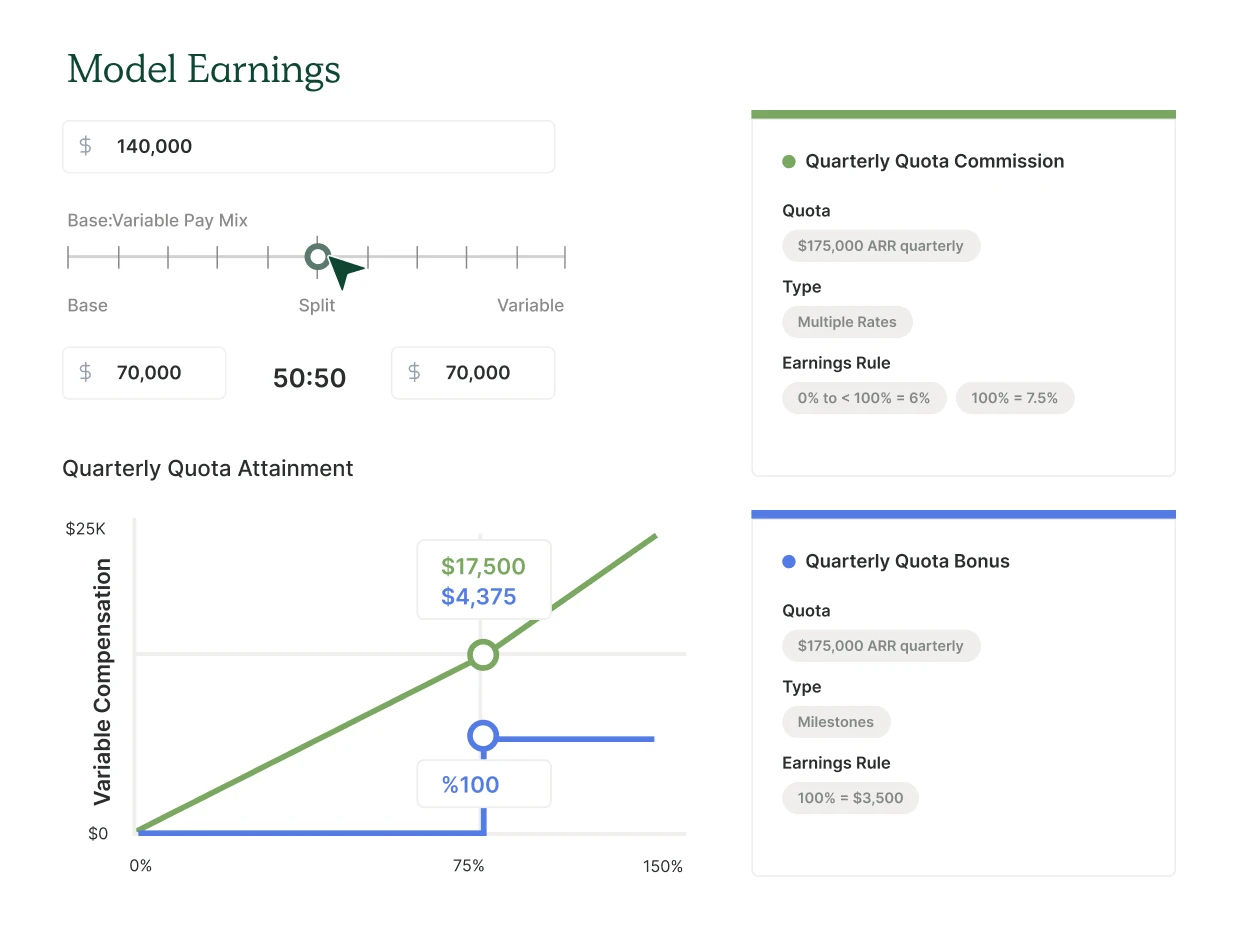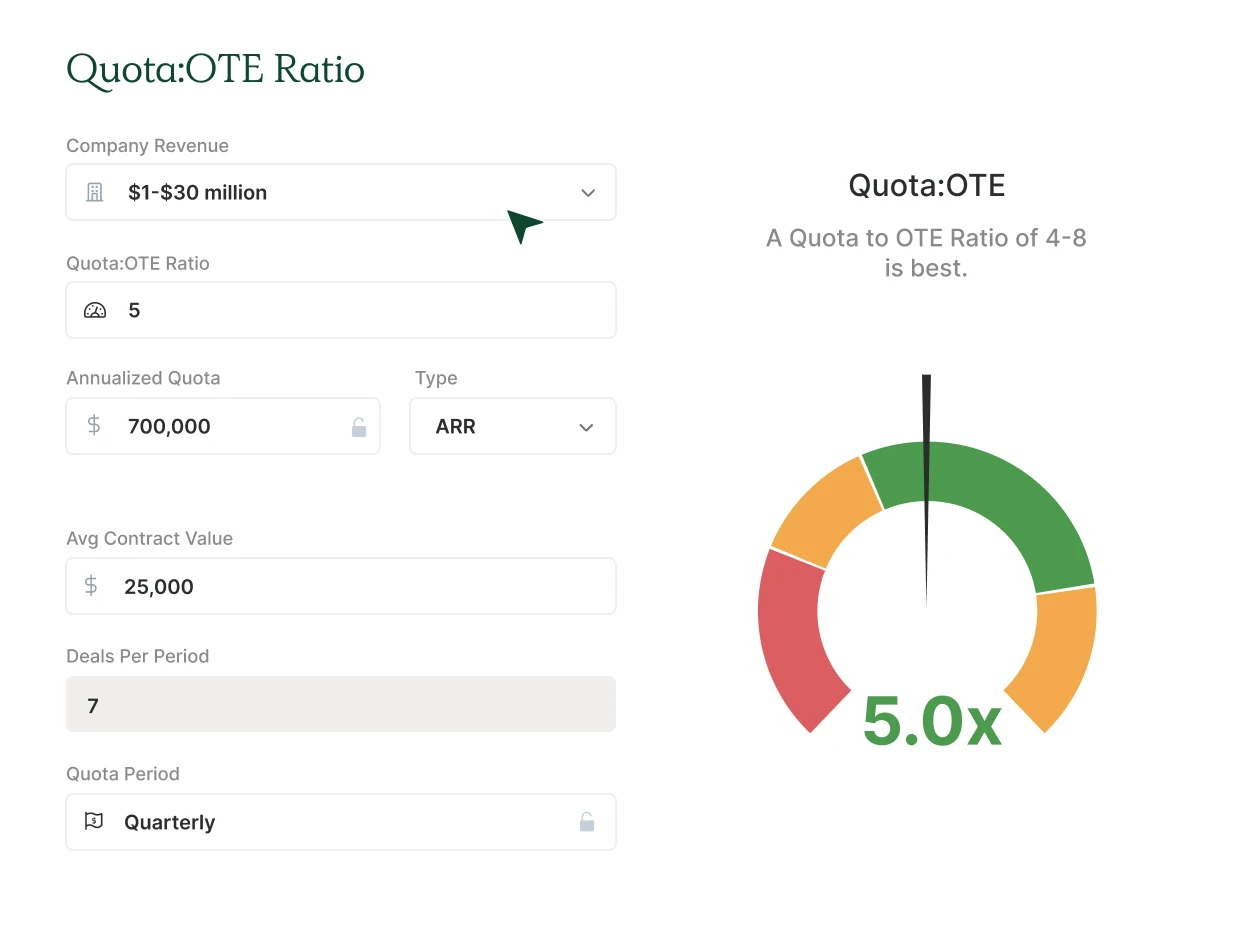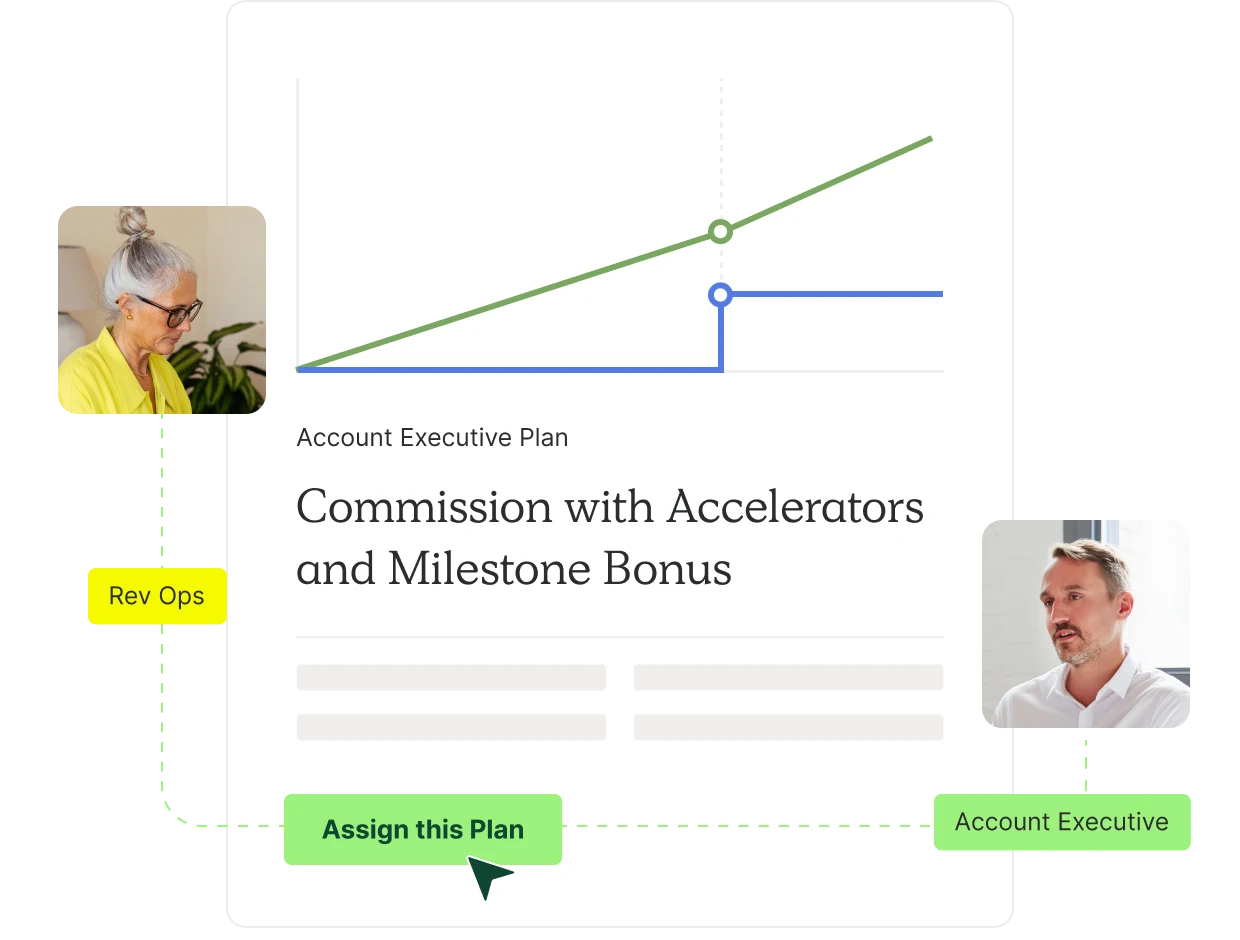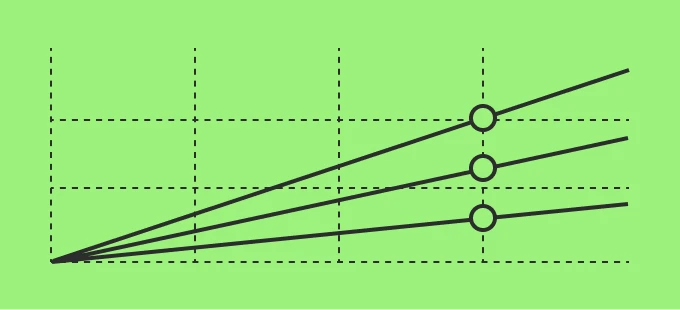Any company should use this plan if extended contract terms are integral to their go-to-market strategy
Commission with Multi-Year Accelerators
This compensation plan template mirrors the Single Rate Commission with Contract Term Multiplier plan, only this one rewards over performance. Be aware of your commission rates, as the rates really start to climb.

When to use this plan?
Why use a Commission with Multi-Year Accelerators plan?
Incentivizes reps to sell multi-year contracts and rewards for that and again for exceeding quota
Customize the Commission with Multi-Year Accelerators Plan
Like this plan? Sign up for QuotaPath for free to add your business inputs and adjust the variables.
Forecast earnings & plan performance
See potential earnings based on your inputs and goal attainment progress.

Check the health of your Quota:OTE ratio
Use the calculator to quickly measure how realistic, attainable, and healthy your OTE to quota ratio is.

Streamline plan management
Assign the plan to your team and automate sales commission calculations. Be confident your team is being paid fairly and accurately.

How to adjust this compensation plan template
To customize this plan, you will input these 7 variables.
On-Target Earnings (OTE)
OTE combines base salary with variable pay and represents the total amount of money your reps can expect to earn if they hit 100% of quota.
Pay Mix
Refers to the percentage of a salesperson’s total compensation, made up of base salary, commission, and other incentives. The most common pay mix in SaaS is 50/50.
Company Revenue
Revenue is the total amount of income that a company generates from its primary operations. In SaaS, annual recurring revenue is one of the most important metrics.
Quota:OTE Ratio
This ratio quantifies how much larger a quota is to a sales rep’s OTE. The most common multiplier in SaaS is a quota 5x that of the OTE, but this will vary based on size and stage of the company.
Annualized Quota
An annualized quota is a sales goal that is set for a year.
Average Contract Value
Often abbreviated to ACV, this number represents the average deal size that your company sells.
Quota Period
Your quota period sets the frequency at which your team’s quota resets. In SaaS, the most common quota period is quarterly. However, this number will vary based on your sales cycle.
Frequently asked questions
What is a multi-year contract?
A multi-year contract involves a signed commitment from a customer to purchase services from a vendor for a period that extends beyond the first 12 months in which the contract is signed upon.
Why would I pay more for longer deals?
Longer deals are generally preferable because they create a reliable and guaranteed source of revenue for more than one year. A customer that has agreed to work with you for three years gives you the time needed to properly create a longstanding relationship. Typically longer contract terms also come with a discount for the client, so you’ll need to pay a higher rate to prevent salespeople from earning less when selling a more desirable deal.
What is an accelerator in sales?
Accelerators, which we sometimes refer to as multiple rate commissions, bump the commission rate to a higher rate once a rep has reached a quota attainment parameter, deal size, or total amount of sales in a month or quarter.
Are accelerators necessary?
Accelerators (and decelerators) are designed to encourage overachievement of quota and motivate sales reps. Not only are they one of the most common compensation plan components (80% of comp plans use accelerators), but they’re very well understood by sales reps. If you’re hoping to see a lot of reps overachieve, it’s recommended to include accelerators.
Is this plan too complex?
This is definitely a more complex sales commission structure. If you’re worried about this compensation plan being overly complicated, you could try one of our other plans like Account Executive: Commission with Accelerators or Single Rate Commission with Contract Term Multiplier.
What if I sell more than one product?
If you sell more than one product and want to have the same commission rate across products, this sales compensation plan model would still work just fine for you. If you want to pay different commission rates for different products or have different quotas for each product, this plan might not be best. It’s already a fairly complex plan, so adding in another layer with different product rates might make it too complicated for your reps to understand fully.
Does it make sense to have different quotas for each contract length?
It generally doesn’t make sense to give different quotas for each different contract length. This is because that would add in extra complexity for no additional gain. By paying your reps based on their quota attainment and the contract length, you are signaling that you want them to close longer deals.
What about contracts that are 2.5 years long?
Contracts that aren’t exactly 1, 2, or 3 years long should be rounded down. So if you have an 18 month contract, that would be paid out at the one year rate. If you have a 2.5 year long contract, that would be paid on the 2-year commission rate.
Why do I pay off of ARR?
You want to make sure to pay off of ARR (Annual Recurring Revenue), ACV (Annual Contract Value), or MRR (Monthly Recurring Revenue) to ensure you aren’t double compensating your reps for closing longer deals. If you paid them off of TCV (Total Contract Value), they’ll earn a higher commission rate and at a higher amount, which essentially double dips.
What’s the easiest way to track and calculate this plan?
With QuotaPath, give your reps, leadership and finance real-time earnings and attainment data for accurate and trusted commission reporting. Our commission tracking and sales compensation software. Plus, use our forecasted earnings function so that reps can see how the next deal impacts their path to the next accelerator tier.
Explore similar compensation plans

Single Rate Commission with Contract Term Multiplier
Looking to increase gross revenue retention? Incentivize multi-year deals with this comp plan.

Single Rate Commission
This industry agnostic commission plan is simple, straightforward, and great for your first plan.

Commission with Accelerators
The most popular account executive commission structure in SaaS, this plan rewards over performance. Works best when you’re confident about your quotas and targets.
What industry leaders say
Manage compensation & track commissions with QuotaPath
Deliver visibility, automation, and seamlessness across the entire compensation process.